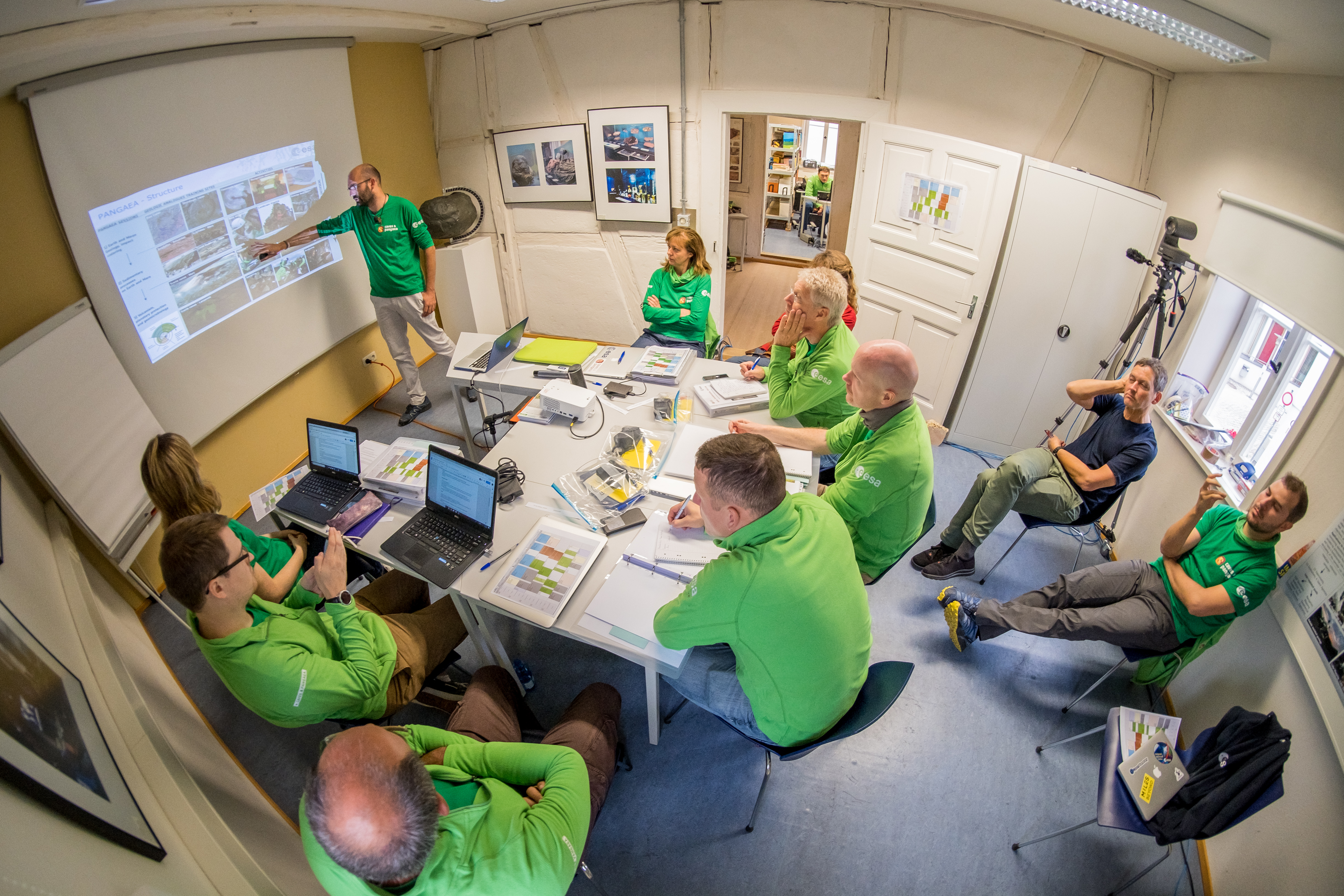ESA astronauts and space scientists explore a strange planet – Earth!

Does your classroom look like this? Here, the course participants are learning about geology
19 September 2018
Right now, as you read this, you are on a rock hurtling through space – the planet Earth! Like all the planets in our Solar System, learning more about it can help us to find out about worlds and how they form. Rocks and minerals on Earth all give clues as to how our home in space came to be.
A group of intrepid astronauts and space scientists are currently taking part in an exciting ESA geology training course, which is a bit like a field trip! They are searching in strange locations on Earth to find minerals that could help unlock the mysteries of our planet. The lessons they learn and techniques they develop will better prepare for future human astronauts and geologists undertaking this same mission on the Moon, Mars, and asteroids!

The underground lava tubes of Lanzarote may be similar to what we could find on Mars and the Moon
The participants, including ESA astronaut Thomas Reiter, are being trained by some of the best planetary geologists Europe has to offer. From collecting rock samples to understanding satellite images and working with robotic tools, the crew are learning how best to explore uncharted worlds.
The first destination on the course was the Ries Crater in Germany. This is the perfect place to learn about impact craters, which will be very useful for future Moon explorers! The crew then moved to the Italian Dolomites, a mountain range with layers shaped by running water in the past, which are similar to features on Mars. Finally, the alien-like landscape of Lanzarote in Spain will be visited, to investigate what happens when volcanic activity and water are combined, which are two key factors in the search for new forms of life.
Find out more about geology training for space exploration! Copyright: ESA.
Can you think of any other places on Earth that are like alien worlds? Would it be useful to visit them to prepare for future expeditions into space?
You can keep up-to-date with the course on its official blog: http://blogs.esa.int/caves/
Cool fact: This training project is called Pangaea, after the supercontinent that existed long in Earth’s past, before the land broke into the separate continents divided by oceans that we have today.




